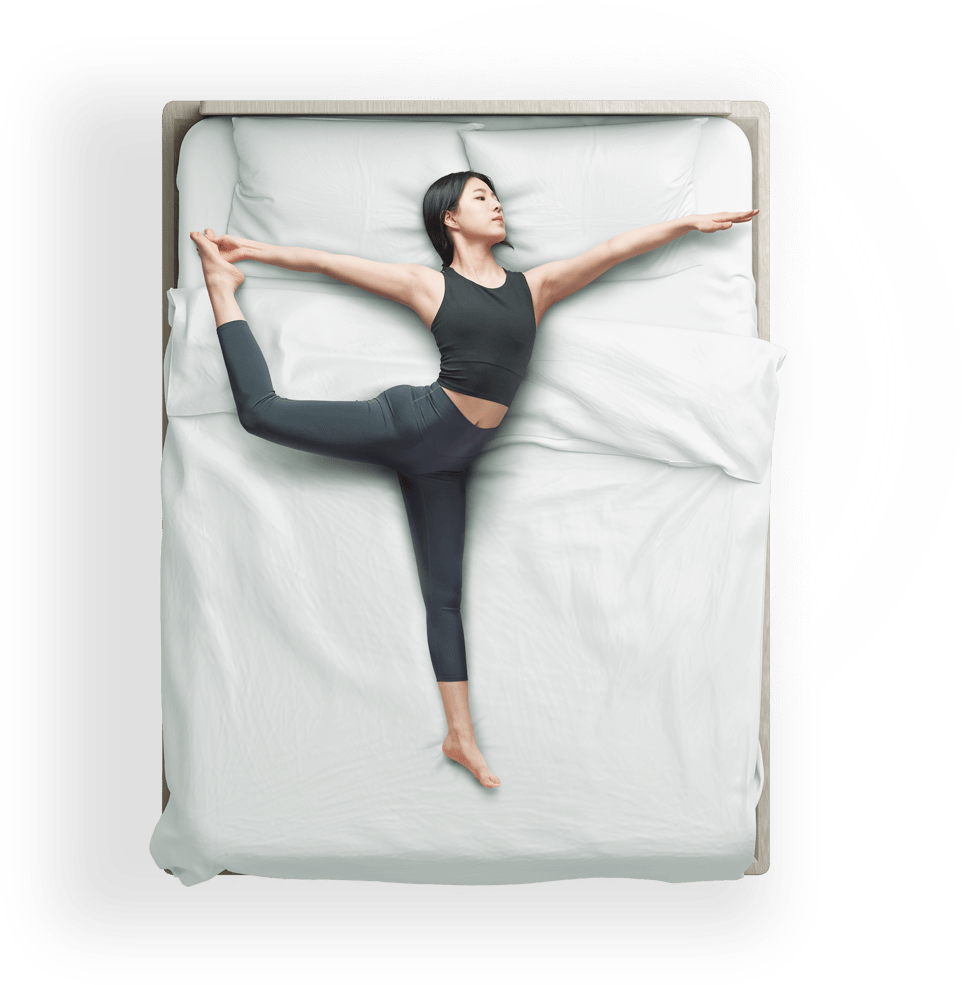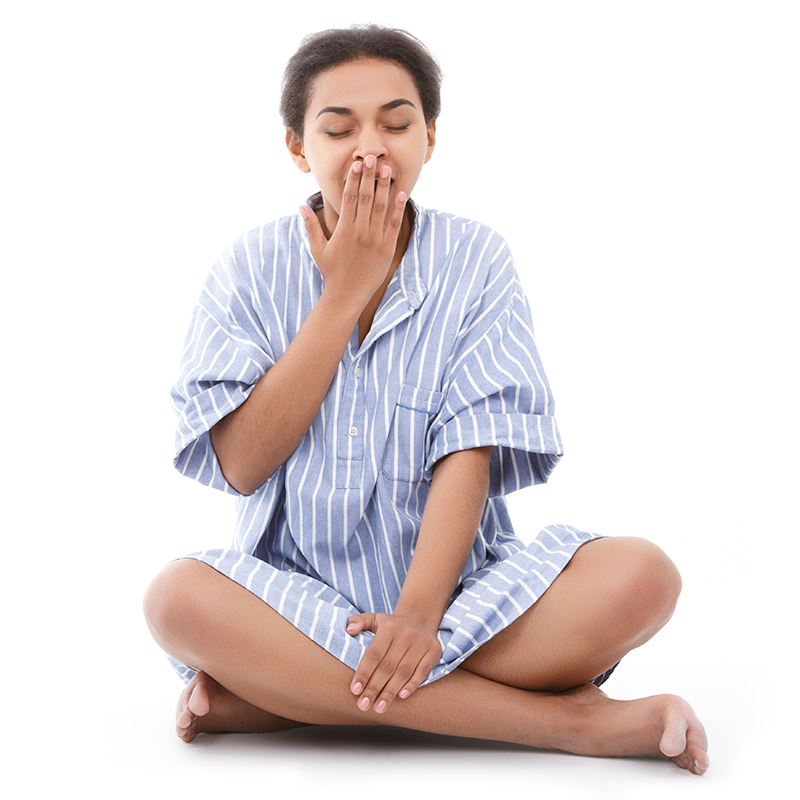Sleeping
Move more, sleep more
Do you toss and turn at night or have trouble falling asleep? Are you feeling tired throughout the day and can’t wait to crawl back under the covers? It turns out that you’re not alone. According to Statistics Canada, almost half of people living in Canada don’t wake up refreshed, but getting active can help get you to sleep!

How can physical activity help me sleep?
Physical activity provides us with natural stress relief. Our body decreases cortisol levels when we increase our oxygen levels, and aerobic activities can do just that.
For a good night’s sleep and to maintain our body clock, known as our “circadian rhythm”, experts recommend seven to nine hours of uninterrupted sleep for adults.2
This rhythm works closely with the hormones in our bodies, such as cortisol. Cortisol is released during times of stress, and elevated levels of this hormone make it harder for us to fall and stay asleep. Cortisol levels can also be lowered through mindfulness-based activities, which help calm our nervous system.
Less than half of adults living in Canada are meeting the Canadian Physical Activity Guidelines, which means we’re not tiring ourselves out each day for a deep sleep – and in turn, we’re not sleeping well enough to wake up refreshed.3 It’s a vicious cycle!

Here’s how:
There is an answer: balancing hormones and staying active can help. By getting 150 minutes of moderate-to-vigorous physical activity weekly, you’ll be catching ZZZs like a pro in no time!
- Aim for 30 minutes of moderate-to-vigorous physical activity per day like swimming or running to contribute to your 150 minutes of weekly activity.
- Avoid screens before bedtime, as they suppress melatonin, a hormone involved in your circadian rhythm.5
- Avoid strenuous activity close to bedtime. Gentle stretching, or a walk or wheel outdoors, are all excellent ways to prepare your body for sleep mode.
- Establish a calming and relaxing bedtime routine, such as reading or taking a warm bath to signal to your brain and body that it’s time to log-off.
References
- CHAPUT ET AL., (2017). DURATION AND QUALITY OF SLEEP AMONG CANADIANS AGED 18 TO 79. RETRIEVED FROM https://www150.statcan.gc.ca/n1/pub/82-003-x/2017009/article/54857-eng.htm
- NATIONAL SLEEP FOUNDATION. (2015). NATIONAL SLEEP FOUNDATION RECOMMENDS NEW SLEEP TIMES. RETRIEVED FROM https://sleepfoundation.org/press-release/national-sleep-foundation-recommends-new-sleep-times
- STATISTICS CANADA. (2015). DIRECTLY MEASURED PHYSICAL ACTIVITY OF ADULTS, 2012 AND 2013. STATISTICS CANADA. RETRIEVED FROM https://www150.statcan.gc.ca/n1/pub/82-625-x/2015001/article/14135-eng.htm
- STATISTICS CANADA. (2014). PERCEIVED LIFE STRESS. RETRIEVED FROM https://www150.statcan.gc.ca/n1/pub/82-625-x/2015001/article/14188-eng.htm
- UNIVERSITY OF HAIFA. (2017). BLUE LIGHT EMITTED BY SCREENS DAMAGES OUR SLEEP. RETRIEVED FROM https://www.sciencedaily.com/releases/2017/08/170822103434.htm

